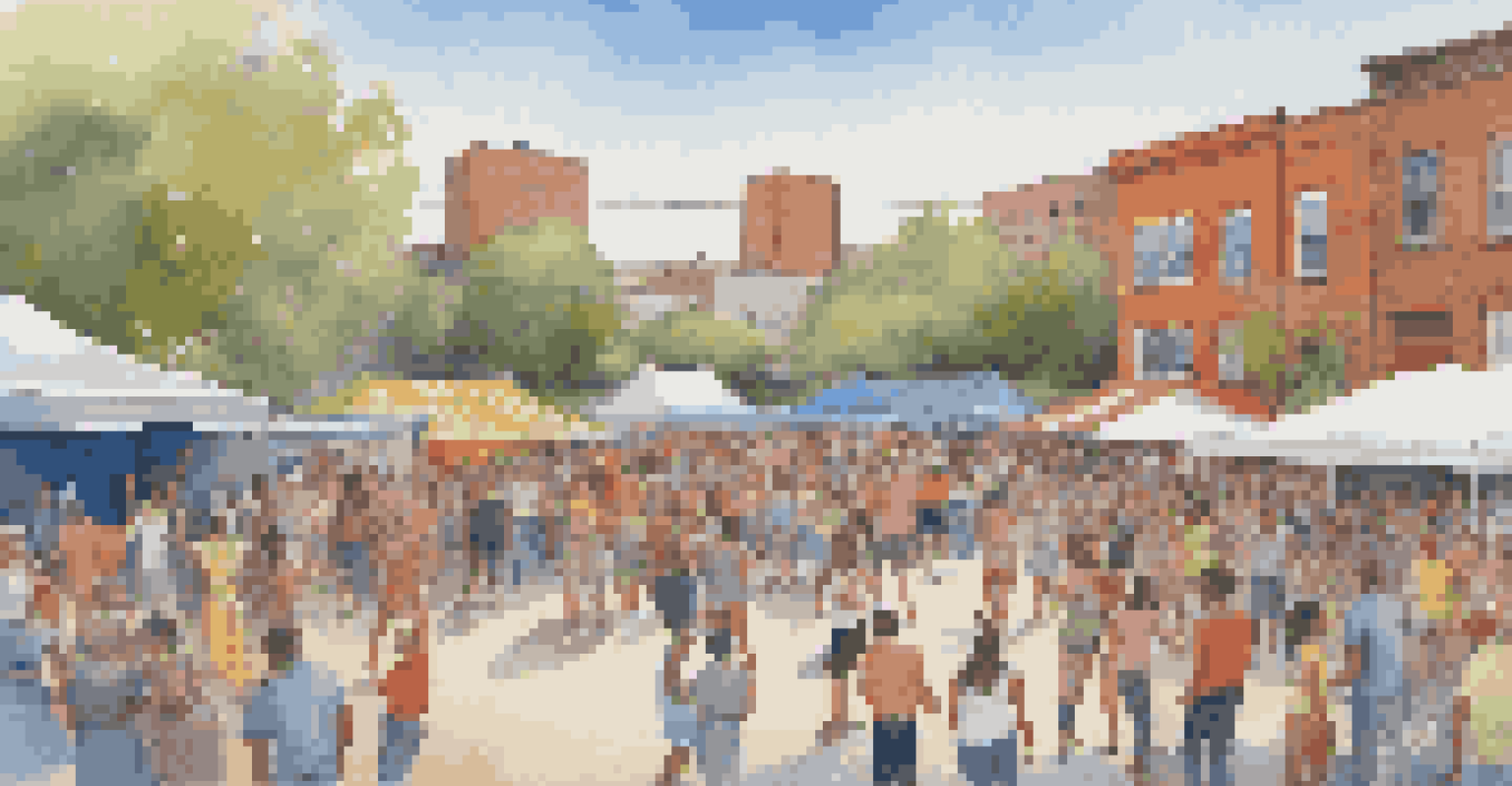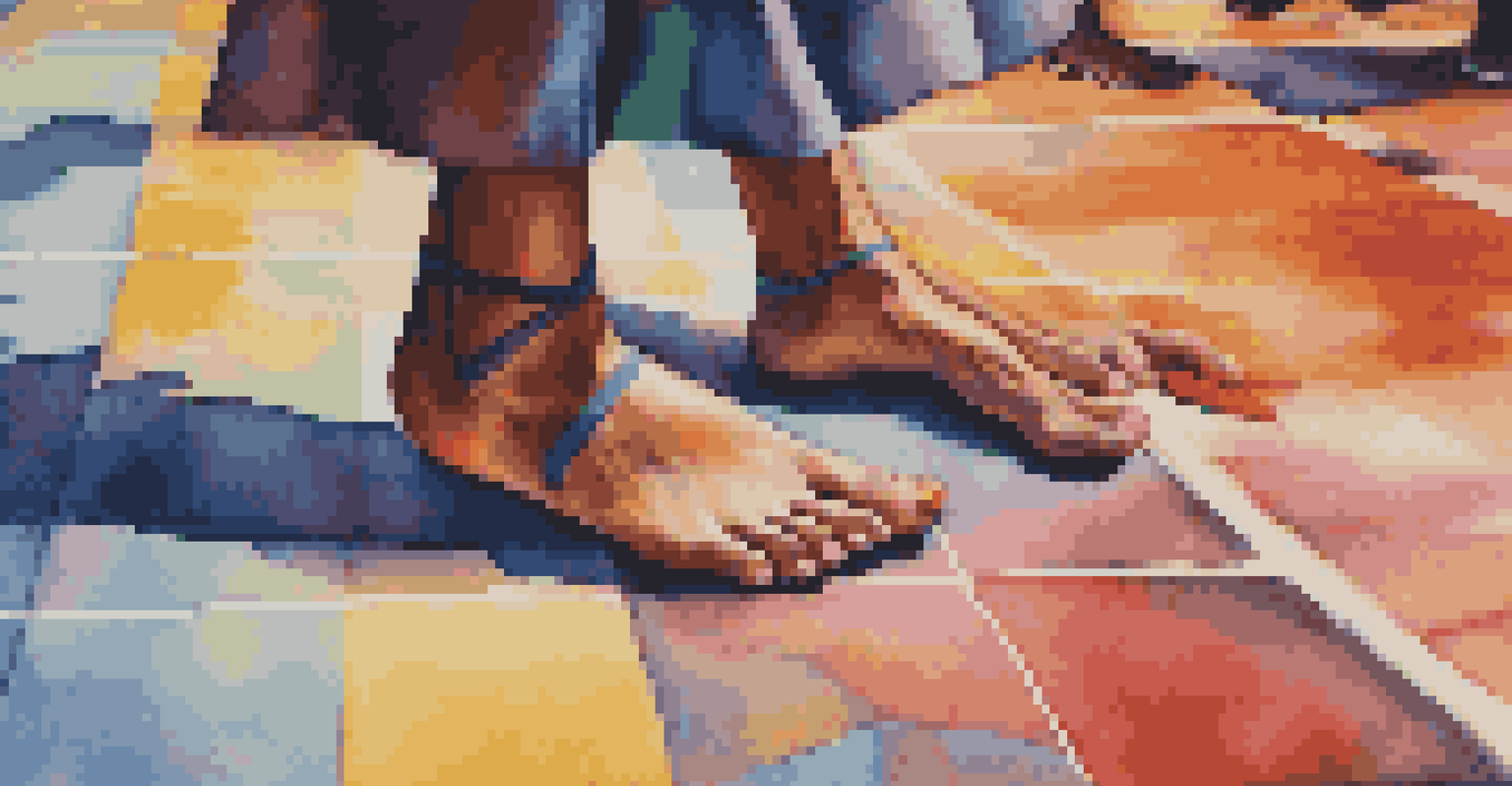The Role of Dance in Urban Revitalization Efforts

Understanding Urban Revitalization and Its Challenges
Urban revitalization refers to efforts aimed at rejuvenating neglected city areas, often facing challenges like economic decline and social disconnection. In many cities, abandoned buildings and vacant lots symbolize these struggles, creating a need for innovative solutions. Tackling these issues requires a multifaceted approach that combines economic, social, and cultural strategies to breathe life back into communities.
Dance is the hidden language of the soul.
One of the primary challenges in urban revitalization is engaging the community, as residents often feel disconnected from the development process. It’s crucial to include community voices and foster a sense of ownership over revitalization efforts. This is where the arts, particularly dance, come into play as a powerful tool for engagement and transformation.
Dance as a form of expression can resonate deeply within communities, breaking barriers and bringing people together. By incorporating dance into revitalization strategies, cities can create vibrant spaces that foster connections, promote local culture, and encourage participation from all demographics.
Dance as a Catalyst for Community Engagement
When dance is introduced into urban revitalization efforts, it can spark excitement and participation among residents. Dance events, workshops, and performances invite community members to engage in a shared experience, fostering a sense of belonging. This collective participation can help bridge gaps between diverse groups, creating a more inclusive environment.

For instance, community dance festivals can transform vacant lots into lively gathering spaces, attracting people of all ages and backgrounds. These events not only provide entertainment but also encourage networking and collaboration among residents and local organizations. The shared joy of dance can unite people, making them more invested in their neighborhood's future.
Dance Engages Communities Effectively
Incorporating dance into urban revitalization fosters community engagement and a sense of belonging among residents.
Moreover, dance programs can serve as platforms for local artists to showcase their talent, thereby enhancing the cultural landscape of the area. This artistic expression not only enriches the community but also draws attention from outside visitors, further promoting economic growth and revitalization.
Creating Safe and Inviting Public Spaces Through Dance
Public spaces play a crucial role in urban revitalization, and incorporating dance can significantly enhance their appeal. Transforming underutilized areas into vibrant dance hubs can make neighborhoods safer and more inviting. When people gather in these spaces for dance activities, they contribute to a lively atmosphere that encourages others to join in.
The arts are not a luxury; they are a necessity for the human experience.
For example, open-air dance classes in parks can draw crowds, transforming an ordinary space into a dynamic community center. As people come together to dance, they naturally foster connections and build relationships, creating a sense of safety and camaraderie. The presence of engaged individuals can deter negative activities, leading to a more secure environment.
Additionally, these dance-filled spaces can host events that celebrate local culture, further solidifying community bonds. When residents feel proud of their public spaces, they are more likely to take care of them, creating a cycle of improvement that enhances the overall urban landscape.
The Economic Benefits of Dance in Urban Revitalization
Incorporating dance into urban revitalization initiatives can yield significant economic benefits for communities. Dance events and performances can attract tourists and visitors, generating revenue for local businesses and creating jobs. This influx of activity can help revitalize local economies that may have been struggling.
Moreover, dance studios and performance spaces can emerge as vital components of the urban fabric, offering employment opportunities for instructors and performers alike. By supporting local talent, cities can promote economic sustainability and encourage residents to invest in their creative communities.
Economic Growth Through Dance Events
Dance initiatives can attract visitors, generate revenue, and create jobs, revitalizing local economies.
As urban areas become more vibrant through dance, property values may also rise, benefiting homeowners and attracting new residents. This economic boost can help fund further revitalization projects, creating a positive feedback loop that enhances the community's overall quality of life.
Dance as a Vehicle for Cultural Expression and Identity
Dance serves as a powerful medium for cultural expression, allowing communities to share their unique identities and stories. In urban revitalization efforts, celebrating diverse dance forms can help preserve local heritage and promote cultural understanding. This celebration of identity can strengthen community ties and instill pride among residents.
For example, neighborhoods with rich cultural histories can incorporate traditional dance styles into revitalization initiatives, showcasing their heritage to both locals and visitors. This not only honors the traditions of the community but also educates others about the significance of these art forms.
Furthermore, dance can foster cross-cultural exchanges, encouraging collaboration between different communities. As people come together to learn and celebrate various dance styles, they create a rich tapestry of cultural interactions that enhance the overall urban experience.
Case Studies: Successful Dance Initiatives in Urban Areas
Cities across the globe have successfully integrated dance into their urban revitalization efforts, showcasing its potential impact. For instance, the 'Dancing in the Streets' program in Detroit has transformed neglected areas into vibrant cultural hubs, offering free dance classes and performances. This initiative not only revitalizes the community but also strengthens social connections among residents.
Similarly, in New York City, the 'Dance in the Parks' program utilizes public parks to host dance events that engage diverse communities. These initiatives have proven effective in drawing people together, creating a sense of community ownership and pride while promoting local artists and businesses.
Cultural Identity Through Dance
Dance serves as a medium for cultural expression, helping communities celebrate their unique identities and heritage.
These case studies highlight the power of dance as a tool for urban revitalization, demonstrating how creative programming can breathe life into neglected spaces and foster community engagement.
Future Trends: The Evolution of Dance in Urban Revitalization
As cities continue to evolve, the role of dance in urban revitalization is likely to grow, adapting to new challenges and opportunities. The rise of technology offers exciting possibilities, such as virtual dance events that can engage broader audiences and bring diverse communities together. This adaptability can enhance the reach and impact of dance initiatives.
Moreover, as cities prioritize sustainability, dance can be integrated into eco-friendly urban designs, promoting outdoor spaces that encourage physical activity and social interactions. This shift toward greener, more inclusive spaces can elevate the role of dance in fostering community well-being.

Ultimately, the future of dance in urban revitalization will depend on collaboration among artists, community leaders, and residents. By embracing innovation and inclusivity, cities can harness the transformative power of dance to create vibrant, resilient urban environments.